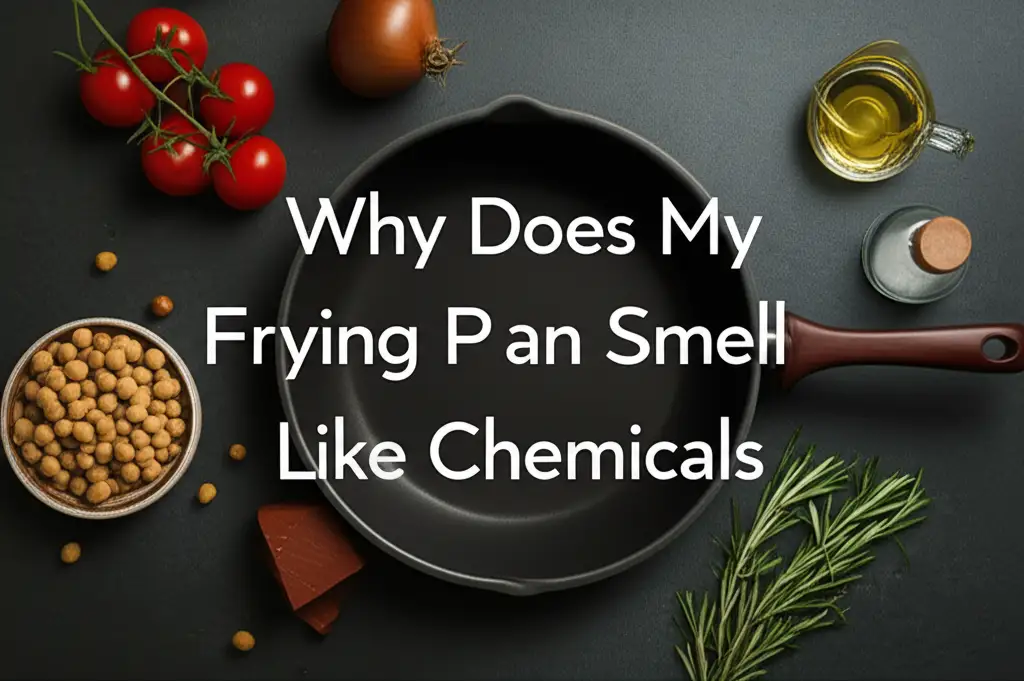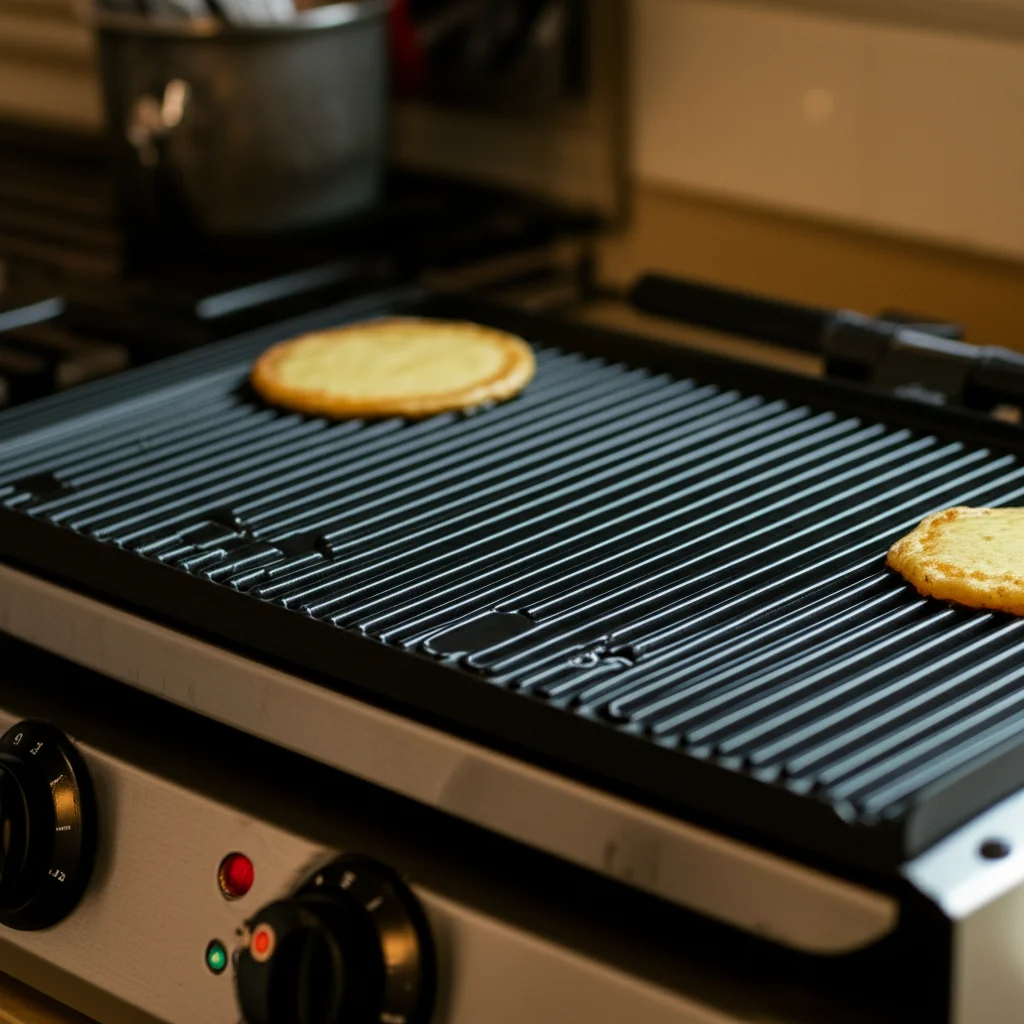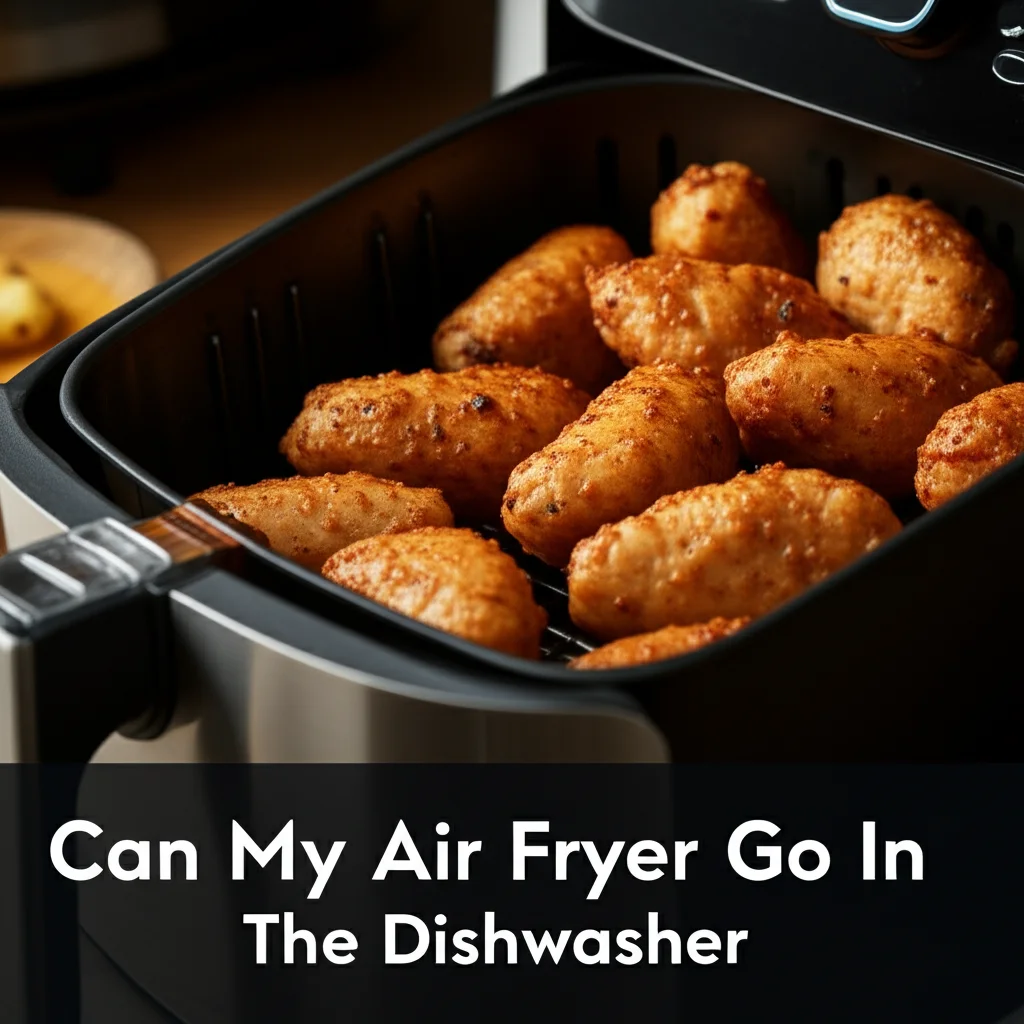· Todd Martin · Kitchen Maintenance · 14 min read
Why Does My Frying Pan Smell Like Chemicals

Understanding the Chemical Odor: Why Does My Frying Pan Smell Like Chemicals?
It is frustrating when your kitchen smells unpleasant. You might cook a delicious meal, but then a strange chemical smell fills the air. This distinct odor often comes from your frying pan. I know this can be quite concerning. A chemical smell from cookware is not normal. It can point to various issues, from manufacturing residues to overheating. This guide explores common reasons for the chemical odor. We will also cover how to prevent it and ensure your cooking is safe.
Takeaway
- New pans often have protective coatings that burn off during first use, causing a chemical smell.
- Overheating non-stick pans can release chemical fumes from their coatings.
- Burnt food or grease stuck on the pan can transform into chemical-like odors when reheated.
- Residue from strong cleaning products can cause a lingering chemical scent.
- Proper seasoning, cleaning, and temperature control prevent chemical smells and maintain pan safety.
Why Does My Frying Pan Smell Like Chemicals?
Your frying pan smells like chemicals due to several reasons. These include new pan manufacturing residues, overheating non-stick coatings, burnt food buildup, or lingering cleaning product residue. Understanding the specific cause helps you safely address the issue and keep your cookware in good condition.
New Pan Odors: The Manufacturing Residue Effect
Have you ever used a brand-new frying pan for the first time? It often emits a peculiar smell. This chemical odor is usually harmless. Manufacturers apply protective coatings to new pans. These coatings prevent rust and damage during shipping and storage. They are part of the manufacturing process.
When you heat the pan, these coatings burn off. This burning process releases the chemical smell. It is similar to the smell a new air fryer might produce. The smell should disappear after the first few uses. Proper initial cleaning and seasoning help remove these residues. Always read the manufacturer’s instructions for new cookware. Some pans require a specific pre-treatment before use.
Preparing Your New Frying Pan
Preparing a new pan properly is important. This step helps remove factory residues. It also creates a non-stick surface, especially for cast iron. I always make sure to wash a new pan thoroughly. Use warm, soapy water and a soft sponge. Rinse it completely to remove all soap.
For cast iron, seasoning is vital. Seasoning involves applying a thin layer of oil. You then heat the pan in an oven. This process bakes the oil onto the surface. It creates a natural, durable, non-stick layer. This also helps prevent chemical smells from raw metal. Always follow specific instructions for your pan type.
Overheating Non-Stick Coatings: The Teflon Fumes
Non-stick frying pans are very popular. They are easy to cook with and clean. Most non-stick coatings use a polymer called PTFE. Polytetrafluoroethylene is the technical name. Teflon is a well-known brand name for this material. These coatings are safe for normal cooking temperatures.
However, non-stick coatings can break down if overheated. This happens at very high temperatures. The coating starts to degrade. It releases chemical fumes into the air. These fumes might smell like plastic or chemicals. Breathing these fumes can cause flu-like symptoms. This condition is sometimes called polymer fume fever. Always use non-stick pans on medium or low heat. Avoid preheating them empty. This practice reduces the risk of overheating. Many ovens and air fryers can also produce a burning plastic smell for similar reasons.
Identifying Overheated Non-Stick Pans
How do you know if your non-stick pan is too hot? There are clear signs. The pan will start to smoke. The food might burn very quickly. You will definitely notice a distinct chemical smell. The pan’s surface might also appear discolored or damaged. Look for flakes or bubbles in the coating.
If you suspect overheating, remove the pan from the heat immediately. Open windows and ventilate your kitchen. Allow the pan to cool completely. If the coating is damaged, it is safer to replace the pan. A damaged non-stick surface can release chemicals more easily. It also loses its non-stick properties.
Burnt Food and Grease Buildup: Chemical Transformation
Sometimes, the chemical smell comes from something simpler. Old, burnt food residue is a common culprit. Bits of food can stick to the pan. They might become carbonized over time. Grease also accumulates on the pan’s surface. It gets trapped in tiny imperfections. These residues are often hard to see.
When you reheat the pan, these old residues burn again. This process releases unpleasant odors. The smell can mimic a chemical scent. It is not always a manufacturing defect. This is especially true for pans that are not cleaned thoroughly. Think about how difficult it is to remove stubborn, burnt-on messes. Those messes can smell terrible when heated.
Effective Cleaning for Residue Removal
Proper cleaning is essential to prevent these smells. I always recommend cleaning your frying pan immediately after use. Let it cool slightly first. Use warm, soapy water and a non-abrasive sponge. Scrub away all food particles. Pay attention to the edges and corners.
For stubborn, burnt-on food, you might need more. Try soaking the pan in hot water for a while. A mixture of baking soda and water can also help. Make a paste with baking soda. Apply it to the residue. Let it sit for 15-30 minutes. Then scrub it off. Baking soda is a natural cleaner. It helps lift burnt food without damaging the pan. This technique is also useful for deep cleaning different types of cookware, similar to how you might clean a frying pan with baking soda. Ensure you rinse the pan thoroughly after cleaning. No residue should remain.
Cleaning Product Residue: Lingering Chemical Traces
You clean your pan to remove food and odors. But sometimes, the cleaning products themselves cause a chemical smell. Strong detergents or abrasive cleaners leave a residue. This residue might not be visible. It stays on the pan surface. When you heat the pan for cooking, this residue heats up. It releases chemical fumes.
This is more common with harsh, industrial-strength cleaners. Dishwasher detergents can also be strong. If you wash your pan in a dishwasher, ensure a complete rinse cycle. Handwashing often gives you more control. You can ensure no soap remains. Always choose mild dish soap for your cookware. Rinse your pan thoroughly, sometimes multiple times.
Rinsing and Drying Your Frying Pan Properly
Rinsing is as important as cleaning. After washing your pan, rinse it under running water. Make sure no suds or slippery feel remains. Hold the pan up to the light. Look for any streaks or film. If you see any, rinse again. Water spots can also indicate leftover residue.
After rinsing, dry the pan completely. Air drying is fine, but sometimes a quick towel dry is better. This prevents water spots. It also stops rust formation on cast iron or carbon steel pans. A dry pan reduces the chance of moisture reacting with leftover chemicals. Store your pans in a dry place. This prevents any mildew or strange smells from developing later.
Metal Reactions and Rust: An Unexpected Chemical Scent
Not all chemical smells come from non-stick coatings or cleaning products. Some metal pans can also produce unusual odors. Cast iron and carbon steel pans require seasoning. This is a layer of polymerized oil. It protects the metal. If seasoning is incomplete or damaged, the raw metal can react.
Unseasoned cast iron might smell metallic or even slightly chemical when heated. This is less common but can occur. Rust also smells distinctively metallic. If your pan rusts, heating it can amplify that smell. Aluminum pans can sometimes react with acidic foods. This reaction can produce a faint metallic or chemical odor. Stainless steel is generally stable. However, some very low-quality stainless steel might have impurities. These impurities could release minor odors at high temperatures.
Maintaining Different Pan Types
Maintaining pans based on their material is crucial. For cast iron, regular seasoning is key. After cleaning, apply a thin layer of oil. Heat it gently on the stove or in the oven. This maintains the protective layer. It prevents rust and improves non-stick properties. For stainless steel, simply clean and dry thoroughly. Avoid harsh abrasives that can scratch the surface.
For aluminum pans, avoid cooking very acidic foods for long periods. Acid can react with aluminum. Use wooden or silicone utensils. Metal utensils can scratch pan surfaces. Scratches create areas where food or cleaning products can get trapped. Proper care extends the life of your pan. It also prevents these unexpected chemical smells.
Low-Quality Materials and Counterfeit Pans: Hidden Dangers
The market offers a wide range of frying pans. Some cheaper options use low-quality materials. These materials might not be as stable when heated. Some counterfeit pans mimic famous brands. They use sub-standard coatings or metals. These materials can break down easily. They can release unexpected chemical odors or even harmful substances.
It is difficult to identify low-quality materials just by looking. Sometimes, the price is an indicator. A pan that seems too cheap might use inferior components. Always buy cookware from reputable brands and stores. Read reviews before making a purchase. Investing in good quality cookware is important. It ensures safety and durability. Avoid non-stick pans with very low prices. Their coatings might not be reliable.
Recognizing Potentially Unsafe Cookware
How can you spot a potentially unsafe pan? Pay attention to the packaging. Is it generic or poorly printed? Does the pan feel unusually light or flimsy? Are there any strange residues or smells directly out of the box? These are red flags. Some cheap non-stick pans use older, potentially harmful chemicals. These include PFOA (Perfluorooctanoic acid). Most modern, reputable brands advertise “PFOA-free” coatings.
Always check for certifications if available. Trustworthy brands will clearly list their materials. They will also provide care instructions. If a pan smells strongly chemical even before heating, return it. Your health and safety are important. Do not take risks with cookware that feels suspicious.
Addressing the Chemical Odor: Steps for Prevention and Removal
Preventing a chemical smell from your frying pan involves regular care and mindful cooking. I have found that consistency is key. Proper initial preparation of new pans is the first step. Always read the manufacturer’s specific instructions. This often involves washing and sometimes seasoning. For non-stick pans, controlling heat is crucial. Never preheat an empty non-stick pan on high heat. Use medium to low settings for most cooking tasks. This prevents the coating from degrading.
Thorough cleaning is another vital part of prevention. Make sure to remove all food and grease residue after each use. Burnt-on bits are a common source of bad smells. Use a non-abrasive sponge. For stubborn messes, soaking or using baking soda can help. Rinse the pan completely to ensure no soap residue remains. Dry the pan immediately after washing. This prevents water spots and potential rust. Regular maintenance extends the life of your pan. It also keeps your kitchen smelling fresh.
Practical Tips for Odor Elimination
If your pan already has a chemical smell, here are some steps to remove it:
- Deep Clean: Wash the pan thoroughly with dish soap and hot water. Use a soft brush or sponge. For stubborn residue, make a paste of baking soda and water. Apply it to the pan. Let it sit for 15-30 minutes, then scrub and rinse well. This method is highly effective for cleaning various types of cooking surfaces. It is similar to how you might clean a frying pan with baking soda.
- Boil Water and Vinegar: Fill the pan with water. Add a cup of white vinegar. Bring the mixture to a boil. Let it simmer for 10-15 minutes. The steam helps lift odors. Vinegar also neutralizes many smells. Pour out the mixture. Wash the pan again with soap and water. Rinse thoroughly.
- Baking Soda Soak: Sprinkle a generous amount of baking soda over the pan’s surface. Add just enough water to make a thick paste. Let it sit overnight. The baking soda will absorb odors. In the morning, scrub and rinse the pan clean.
- Lemon and Salt Scrub: Cut a lemon in half. Dip the cut side in coarse salt. Use this lemon-salt scrub to scour the pan. The lemon acid helps break down residues. The salt acts as a gentle abrasive. This method is great for metallic smells. Rinse the pan well afterward.
- Seasoning (for Cast Iron/Carbon Steel): If the smell is metallic and your pan is cast iron or carbon steel, it might need re-seasoning. Clean the pan completely. Apply a thin layer of cooking oil. Bake it in the oven at a high temperature (around 350-400°F or 175-200°C) for an hour. This process bakes the oil onto the surface. It creates a protective, non-stick layer. Repeat this process if needed. Ensure your pan can go in the oven.
- Ventilation: Always cook in a well-ventilated kitchen. Turn on your range hood. Open a window if possible. Good airflow helps disperse any fumes. It also prevents smells from lingering in your home.
- Inspect for Damage: Check your non-stick pan for any scratches, peeling, or bubbling. A damaged non-stick coating can release more fumes. If your pan is heavily damaged, it is best to replace it. Continued use of a damaged non-stick pan is not recommended.
By following these steps, you can effectively address chemical odors. You can also prevent them from returning. Your frying pan will remain safe and pleasant to use. Always prioritize safety in your cooking.
FAQ Section
Q1: Is a chemical smell from a new frying pan dangerous?
A new frying pan might have a chemical smell. This is usually due to protective manufacturing coatings burning off. This initial smell is generally harmless. Ensure good ventilation when using a new pan for the first time. The smell should go away after a few uses.
Q2: Can overheating a non-stick pan cause health issues?
Yes, overheating a non-stick pan can release chemical fumes. These fumes can cause flu-like symptoms. This condition is known as polymer fume fever. Always use non-stick pans on medium or low heat. Avoid preheating them empty to prevent this.
Q3: Why does my cast iron pan sometimes smell metallic or chemical?
A cast iron pan might smell metallic if its seasoning layer is incomplete or damaged. The raw metal can react when heated. Rust can also produce a metallic odor. Proper re-seasoning of your cast iron pan helps to prevent this issue.
Q4: How do I prevent chemical smells from returning?
Prevent chemical smells by consistently cleaning your pan after each use. Remove all food and grease residue. Rinse the pan thoroughly to remove all soap. Control the cooking temperature, especially for non-stick pans. Ensure proper ventilation while cooking.
Q5: What kind of cleaning products should I use for my frying pan?
Use mild dish soap and a non-abrasive sponge for regular cleaning. Avoid harsh detergents or abrasive cleaners. These can leave residue or damage the pan’s surface. For tough stains, consider natural alternatives like baking soda or vinegar.
Q6: When should I replace my frying pan due to a chemical smell?
Replace your frying pan if the chemical smell persists despite thorough cleaning and proper use. If your non-stick coating is peeling, bubbling, or heavily scratched, it is time for a new pan. A damaged pan can release more harmful fumes.
Conclusion
A chemical smell from your frying pan can be alarming. Yet, understanding its causes helps you address it effectively. From the initial burn-off of new pan coatings to the degradation of overheated non-stick surfaces, several factors contribute. Burnt food residues and lingering cleaning product traces are common culprits. Even certain metal reactions can cause unusual odors. I hope this guide helps you identify the source of the chemical smell in your kitchen.
Remember, prevention is simpler than cure. Always prepare new pans as instructed by the manufacturer. Use appropriate heat settings for your cookware type, especially non-stick pans. Clean your frying pan thoroughly after every use, removing all food and soap residues. Proper seasoning for cast iron and carbon steel pans is also vital. By implementing these practices, you ensure a safe cooking environment. You also extend the life of your cookware. If you continue to notice persistent or strong chemical odors, it is always safer to replace the pan. Your health and peace of mind in the kitchen are paramount. Cook safely, cook well.




